Introduction
The Wat Arun Ratchawararam Ratchawaramahawihan (Wat Arun) is a Buddhist temple located in Thonburi, on the west of Chao Phraya River. The Hindu God Aruna is the source for the name. He is the charioteer of the Sun God Surya. Located near Wat Pho and Grand Palace in Bangkok, but on the other side of the river. Also known as the Temple of Dawn. The cultural significance and the Khmer and Thai architecture of the temple made it as one of the most popular attractions with tourists to Bangkok.
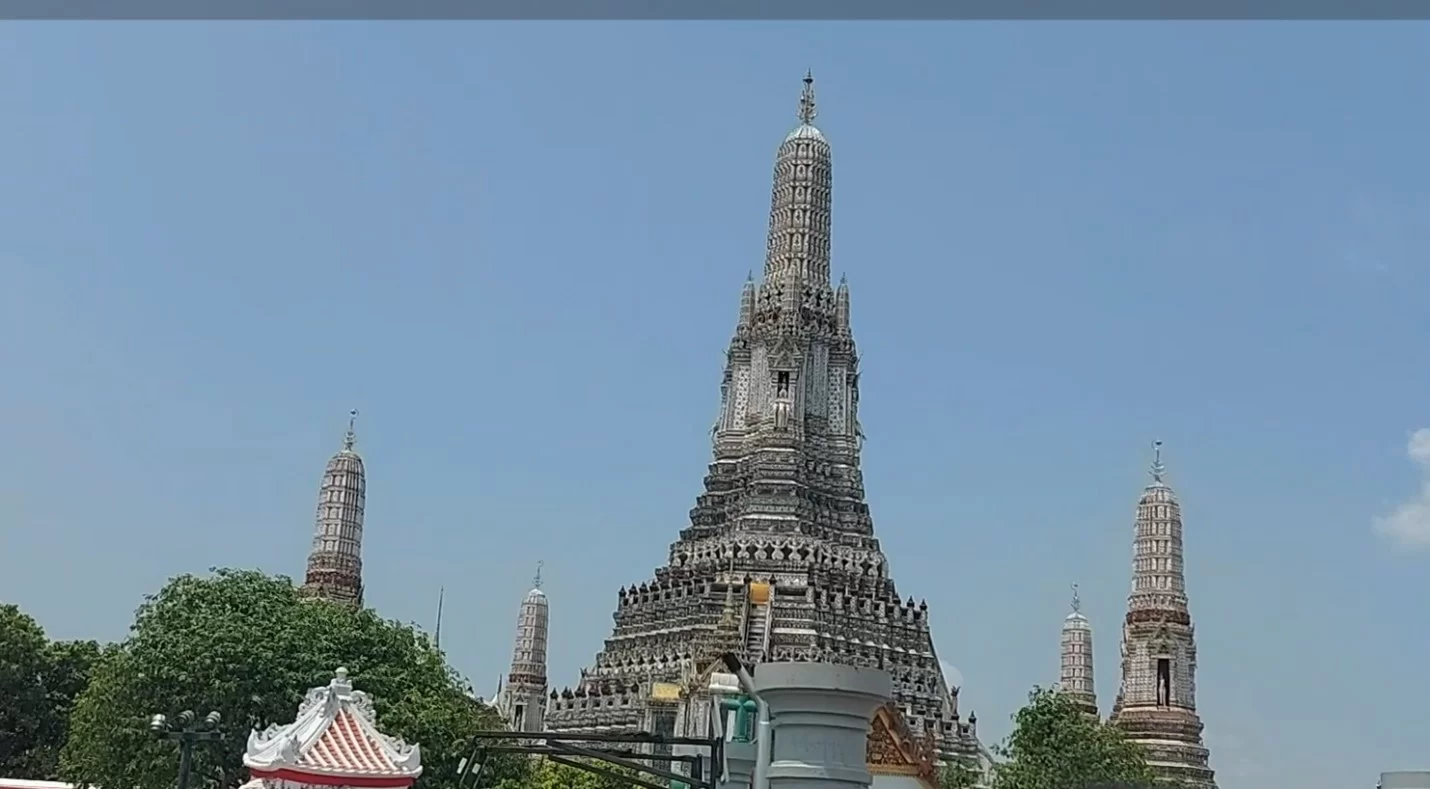
Best time to visit wat arun
Morning time to avoid crowds. Nighttime for view of lit up wat arun temple. The lit-up view is visible even from opposite side of riverbank.
November to March. Temperatures between 29C (85F) and 34C (93F).
How to get to wat arun
Take a ferry from ThaChang Pier to Wat Arun. The ThaTien Pier is currently not operational. Ferries from ThaTien Pier ply to Wat Arun. To reach ThaChang Pier, take a boat from Sathorn Pier near BTS Saphan Taksin station. The other way is to walk down from MRT Sanam Chai station to Tha Chang Pier, which is a 20 min walk.
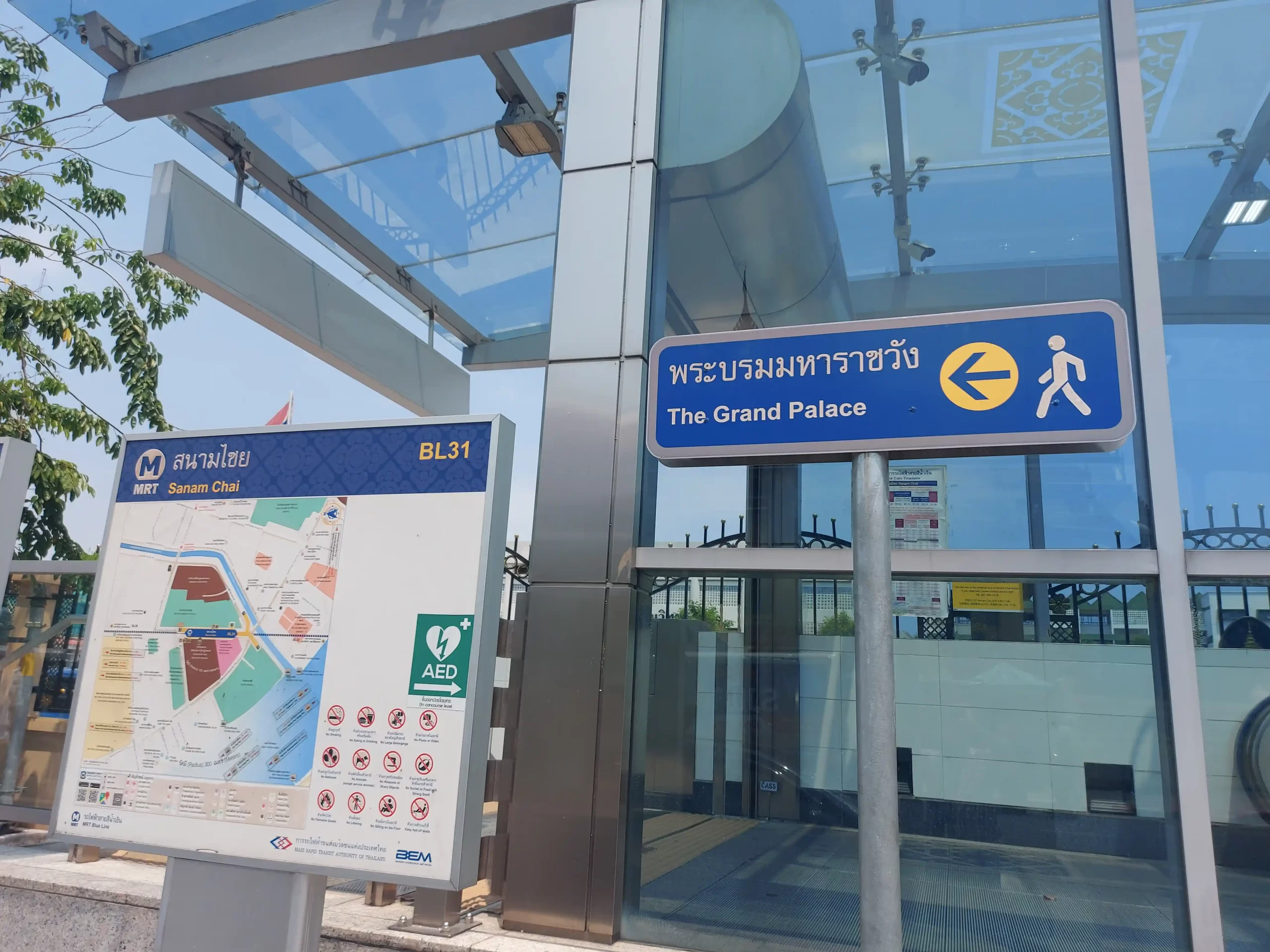
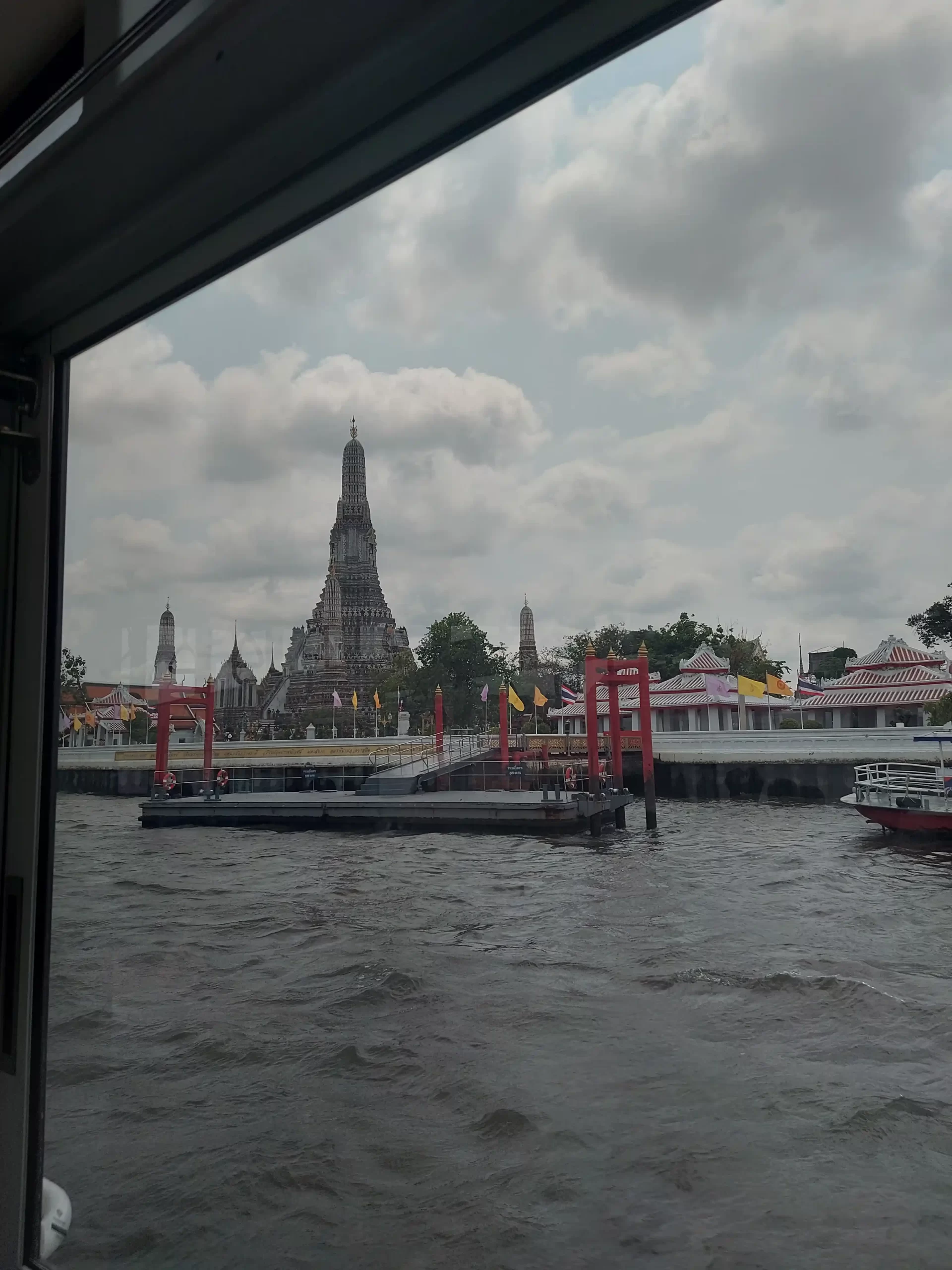
Open timings and tickets of Wat Arun in Bangkok
These may change over time. The Wat Arun is open from 8.30 AM to 6 PM and costs 200 baht.Dress Code in Wat Arun
The dress code requires the body to be covered including legs and arms till elbows. If your dress doesn’t fit the requirement, you can rent or buy the required clothing there.
Time required to see Wat Arun
About 1 hour
Things to do at Wat Arun in Bangkok
Visit the central prang.
Climb the steep central prang, but it is steep. Be very careful with the steps.
View river, Grand Palace and Wat Pho after climbing central prang.
View Golden Buddha image in the ordination hall.
Pray in the ordination hall.
Rent Thai costume and have photoshoot
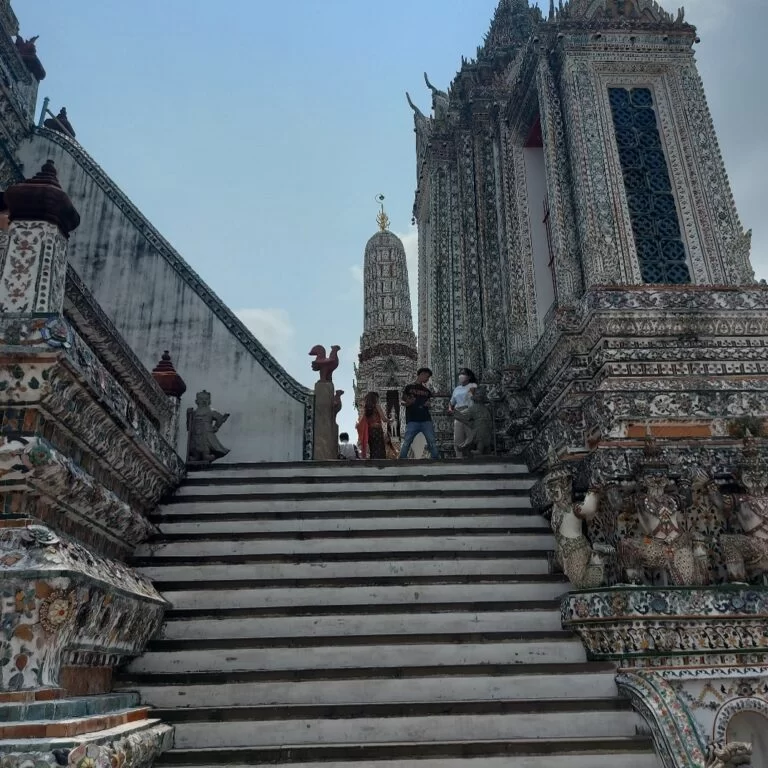
History
A Buddhist temple Wat Makok existed since Ayutthaya Kingdom. The King Taksin who reigned from 1767 to 1782 renamed it as Wat Chaeng. During his reign the temple was on the grounds of the royal palace. The King Taksin established his capital Thonburi near the temple. The temple enshrined the Emerald Buddha image. Emerald Buddha image was transferred to Wat Phra Kaew in 1785.
The King Rama I who reigned from 1782 to 1809 moved the palace to the other side of the river. The King Rama II who reigned from 1809 to 1824 restored the temple and made plans to raise the main pagoda. Buried in this temple are the remains of Rama II. Rama III who reigned from 1824 to 1851 completed the work on the main prang in 1851. The King Rama IV who reigned from 1851 to 1868 changed the name of the temple to Wat Arun Ratchawararam. Rama V who reigned from 1868 to 1910 made some major restoration works of the temple. The Fine Arts Department did a lot of restoration work on the prang for four years from 2013.
Architecture
The central prang in Wat Arun temple is in the shape of a stupa. The central prang is seen as Pagoda. Symbolizes Mount Meru. There are four smaller prangs on the four corners. These four prangs are for wind god Phra Phai. The decoration of the prang is with colorful porcelain and seashells.
There is a seven-pronged trident, referred as the trident of Lord Shiva, on top of central prang. The central prang encloses the relics of Buddha. At the base there are Chinese soldiers and animals. A level up there are four statues of the Hindu God Indra riding Erawan. The Traiphum is the base level of the central prang and indicates all realms of existence. The middle indicates Tavatimsa, the place where all desires are satisfied. The top indicates six heavens and is called Devaphum. At the riverside are six green granite pavilions (sala) in Chinese style.
The ordination hall is next to the prang. The belief is that the King Rama II designed the Buddha image. The front entrance has a roof with a central spire and an altar inside. Thotsakan is the green demon and is Ravana of Ramayana. The white demon is Sahassa Deja. These demons are from the Ramakien, which is the equivalent of Ramayana of Hindus.

Loy Krathong Festival at Wat Arun
Wat Arun plays an important role to float Krathongs during the Loy Krathong festival. The festival is celebrated on the evening of full moon in 12th month of Thai lunar calendar. It generally falls in the month of November.
Krathongs are small boats or baskets made from banana leaves in the shape of lotus and are decorated with flowers, candles and incense. They are released into the water on this auspicious day to thank the god of water, Phra Mae Khongkha.
Loy means float and krathong means basket or boat. The literal meaning of Loy Krathong is to float the basket or boat.
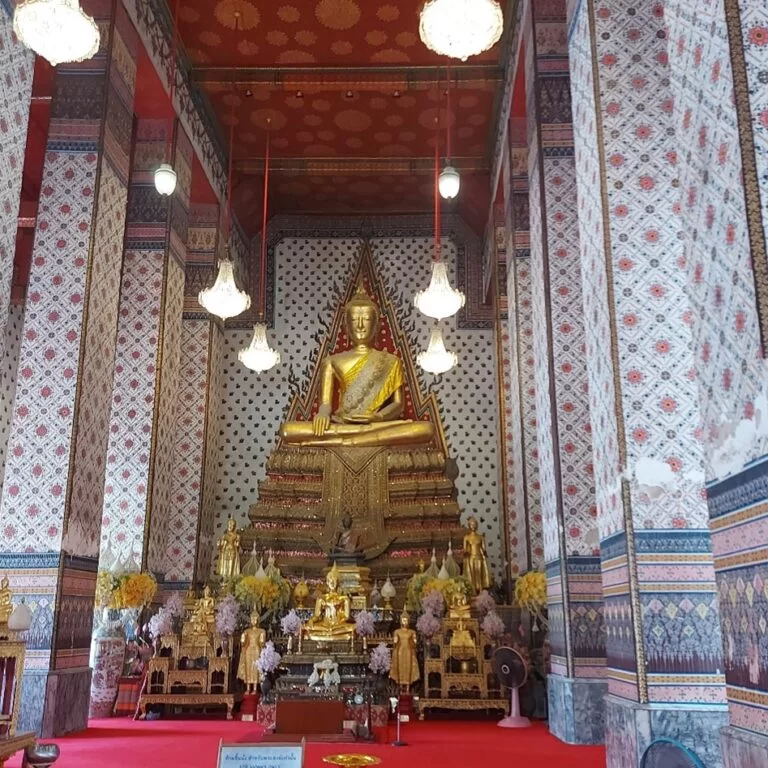
Facilities
There are small shops selling water, snacks, costumes and souvenirs.
There is a pay and use restroom on the site.
Tourist attractions near Wat Arun in Bangkok
- Wat Pho (15-minute ferry ride from Wat Arun)
- National Museum (10-minute walk from Grand Palace)
- Grand Palace (15-minute ferry ride from Wat Arun)
